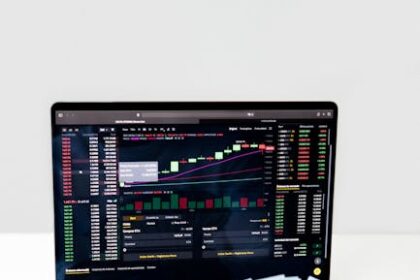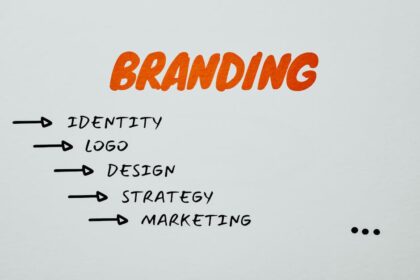Email marketing and content strategy stand not as isolated pillars within the digital marketing landscape, but as intricately connected disciplines, their effectiveness profoundly amplified when working in unison. This symbiotic relationship forms the bedrock of successful modern marketing efforts, transforming mere outreach into meaningful engagement and driving measurable results across the customer journey. Understanding this synergy is paramount for businesses aiming to build lasting relationships, foster loyalty, and convert interest into tangible action.
The Foundational Synergy: Content as the Nucleus of Email Engagement
Email marketing, at its core, revolves around direct communication with a curated audience. It bypasses algorithmic gatekeepers, delivering messages directly to an individual’s inbox. However, the efficacy of this direct line hinges entirely on the value proposition contained within the message. This is precisely where content marketing intercedes, providing the essential substance, the very ‘why’ behind opening, reading, and acting on an email. Without compelling, relevant, and well-crafted content, an email is merely an empty vessel, destined for the spam folder or the unsubscribe list. Conversely, content, no matter how brilliant, struggles to reach its intended audience without a robust distribution mechanism. Email marketing serves as this powerful, personalized conduit, ensuring that valuable insights, entertainment, and solutions land precisely where they can make an impact.
The integration begins with recognizing that every email sent is an opportunity to deliver a piece of content, whether explicitly or implicitly. This content could be a snippet from a recent blog post, a link to a new whitepaper, a video tutorial, an exclusive offer, a customer testimonial, or even a personalized product recommendation rooted in user behavior. The content dictates the email’s purpose, its tone, and its ultimate call to action. A high-quality content strategy ensures a perpetual wellspring of engaging material, preventing email campaigns from becoming repetitive or stale. It allows marketers to segment their audience with precision, delivering hyper-relevant content that addresses specific pain points or interests, thereby drastically increasing open rates, click-through rates, and conversion rates. The content provides the context, the value, and the narrative that transforms a simple email into a powerful conversion tool, nurturing leads through the sales funnel and solidifying customer loyalty long after the initial purchase.
Strategic Content Integration: Fueling Email Campaigns with Diverse Assets
The depth and breadth of content available for email campaigns are vast, extending far beyond simple promotional messages. A well-rounded content strategy provides the necessary ammunition for a dynamic email program.
- Blog Posts and Articles: These form the backbone of many content marketing strategies, offering educational, informative, or entertaining insights. Email serves as an ideal distribution channel, driving traffic back to the website. Marketers can feature a new blog post in a weekly newsletter, compile a digest of popular articles, or use an article series to nurture leads over time. The email content itself might be an enticing abstract or a compelling question that only the full article answers, creating curiosity and incentivizing clicks.
- Whitepapers, E-books, and Guides: These long-form, authoritative pieces establish thought leadership and provide in-depth solutions to complex problems. Email is crucial for their distribution, often gated behind a lead capture form. Nurture sequences can then deliver these assets to segmented audiences interested in specific topics, positioning the company as an expert resource. The email’s role here is to clearly articulate the value proposition of downloading the comprehensive content.
- Video Content: From product demonstrations and customer testimonials to explainer videos and webinar recordings, video boasts high engagement rates. Emails can embed video players (where supported) or link directly to video hosting platforms. A compelling GIF or still image from the video in the email can significantly boost click-throughs. Video content delivered via email is particularly effective for explaining complex services, showcasing product features dynamically, or simply building a more personal connection with the audience.
- Infographics: Highly shareable and easily digestible, infographics condense complex data into visually appealing formats. Emails can present a snapshot of the infographic or provide a direct link to the full version, making information consumption effortless for the subscriber. They are excellent for illustrating trends, comparative data, or step-by-step processes in an engaging way.
- Webinars and Online Events: Promoting and delivering access to live or recorded webinars through email is a standard practice. Email sequences can manage registrations, send reminders, deliver post-event recordings, and follow up with related resources. The email acts as the primary communication channel for guiding potential attendees through the entire event lifecycle.
- Podcasts: For businesses producing audio content, email is a direct line to subscribers, notifying them of new episodes and providing links to listen. Emails can include show notes, key takeaways, or even short audio snippets to entice listeners.
- Case Studies and Success Stories: Demonstrating real-world results and client successes builds trust and credibility. Email campaigns can feature short summaries of case studies with calls to action to read the full version, proving the tangible benefits of a product or service.
- User-Generated Content (UGC): Curating and sharing customer reviews, testimonials, photos, or videos significantly enhances authenticity. Emails can highlight positive UGC, encouraging potential customers by showing how real people benefit from the brand’s offerings. This type of content is incredibly powerful for social proof.
- Interactive Content (Quizzes, Surveys, Polls): Engaging subscribers directly within or via links from emails can gather valuable data, entertain, and personalize future interactions. Emails can initiate quizzes that lead to tailored product recommendations or surveys that inform product development, making the subscriber feel heard and valued.
- Micro-Content: Short, punchy content optimized for quick consumption directly within the email itself. This could be a compelling statistic, a quick tip, a thought-provoking question, or a concise product update. Micro-content is designed to be read immediately without requiring a click, delivering value upfront.
Content Repurposing for Email Efficiency:
A cornerstone of an efficient content strategy is repurposing. A single piece of long-form content, like a whitepaper, can be broken down into multiple email-friendly formats: a series of blog posts, an infographic, a video summary, a social media campaign, and a series of email snippets. This maximizes the return on content investment, ensuring a consistent flow of fresh material for email campaigns without constantly creating new content from scratch. Each repurposed asset can then be tailored to different segments of the email list, extending its reach and relevance.
Personalization Driven by Content Consumption:
The true power of content-driven email marketing lies in its ability to facilitate deep personalization. By tracking how subscribers interact with content (e.g., which blog posts they read, which videos they watch, which whitepapers they download), marketers can segment their audience with remarkable precision. This behavioral data informs subsequent email content. For example, a subscriber who consistently reads articles on “advanced SEO techniques” can be sent emails featuring new SEO guides, relevant webinars, or even specific product offerings related to SEO tools. This approach moves beyond simple demographic personalization to genuine interest-based content delivery, significantly increasing engagement and conversion rates because the content delivered is directly aligned with demonstrated user interest.
Email as the Delivery Vehicle: Driving Content Reach and Impact
While content fuels the email, email is the indispensable engine that delivers content to the right audience at the right time. Its direct, permission-based nature makes it unparalleled for reaching engaged subscribers and guiding them through their customer journey.
- Driving Traffic to Content Assets: The most straightforward role of email is to direct subscribers to newly published content on a website. This is particularly vital for blog posts, news articles, and landing pages hosting lead magnets. Emails provide a direct link, bypassing the noise of social media feeds and search engine algorithms, ensuring that loyal readers and interested prospects are immediately aware of new material. This consistent traffic generation is crucial for content visibility and SEO authority.
- Nurturing Leads with Content Sequences: Email automation allows for the creation of sophisticated nurture funnels where content is strategically dripped to prospects over time. A lead who downloads a basic guide might then receive a sequence of emails linking to more advanced articles, case studies, and eventually a product demo video. Each email in the sequence delivers a piece of content designed to address specific questions or overcome objections, gently guiding the lead towards conversion. This systematic approach ensures that content assets are utilized effectively throughout the sales cycle.
- Building Authority and Trust through Curated Content: Beyond self-promotional content, emails can also serve as a valuable source of curated industry news, expert insights, and third-party resources. By consistently delivering high-quality, relevant content – even if it’s not proprietary – a brand positions itself as a trusted authority and valuable resource. This builds goodwill and keeps subscribers engaged, ensuring they remain receptive to future promotional messages.
- Direct Content Delivery within Emails (Micro-Content): For quick, actionable insights, some content can be embedded directly within the email body. This includes short tips, compelling statistics, brief tutorials, or even mini-infographics. This “micro-content” provides immediate value without requiring a click, enhancing the subscriber experience and making the email itself a valuable piece of content. This strategy improves perceived value and can lead to higher open rates over time as subscribers learn to expect immediate utility.
- Transactional Emails with Content Upsells: Even emails related to purchases, shipping confirmations, or password resets offer opportunities for content integration. A purchase confirmation could include links to product usage guides, FAQs, or complementary products based on the purchase. A password reset email could include a link to a security best practices guide. These subtly integrate helpful content, enhancing the customer experience and potentially driving additional sales or engagement.
- Audience Segmentation and Targeted Delivery: Email platforms allow for granular segmentation based on demographics, purchase history, engagement levels, and crucially, content consumption patterns. This means that specific content can be delivered only to the segments for whom it is most relevant. For example, customers who have purchased product A but not product B could receive content highlighting the synergy between A and B, or existing customers could receive exclusive content updates or loyalty program information. This precision significantly boosts relevance and reduces unsubscribe rates.
Optimizing the Synergy: Best Practices for Maximum Impact
To truly harness the power of email marketing and content, strategic optimization across various touchpoints is essential.
- Crafting Content-Driven Subject Lines: The subject line is the gatekeeper to engagement. It must compel the recipient to open the email, hinting at the valuable content within. Effective subject lines are concise, benefit-oriented, intriguing, and often personalized. They might reference the specific content type (e.g., “New Whitepaper: Mastering AI in Marketing”), pose a question answered by the content, or highlight a key takeaway. A/B testing different subject lines based on content themes is crucial for optimizing open rates. Emojis can sometimes enhance visibility, but should be used sparingly and contextually.
- Designing the Email Body for Content Readability: The email’s design must prioritize the readability and accessibility of the content. This means using clear, concise language, ample white space, legible fonts, and a logical flow. If linking to external content, the email should provide a compelling summary or hook, making it clear what value awaits the click. Visuals like high-quality images, GIFs, or short video clips can break up text and increase engagement. The call-to-action (CTA) should be prominent and directly related to accessing the content.
- Strategic Call-to-Actions (CTAs) for Content Engagement: A strong CTA is paramount. It should be clear, action-oriented, and specific about what the user will gain by clicking. Instead of a generic “Click Here,” consider “Read the Full Guide,” “Watch the Tutorial,” “Download the E-book,” or “Explore Our Latest Research.” CTAs should be strategically placed throughout the email, both as text links and prominent buttons, guiding users effortlessly to the desired content.
- Ensuring Landing Page Consistency with Email and Content: The user experience shouldn’t be jarring after clicking the CTA. The landing page where the content resides must maintain visual and thematic consistency with the email. If the email promised a guide on “Email Deliverability,” the landing page should immediately present that guide, not a generic blog roll or product page. This seamless transition reinforces trust and reduces bounce rates, ensuring that the content delivered meets expectations set by the email.
- Optimizing Frequency and Timing Based on Content Consumption Patterns: Understanding when and how often subscribers prefer to receive content-driven emails is critical. This varies by industry, audience, and even the type of content. Some audiences might prefer a daily digest, while others might find a weekly deep-dive more appealing. Leveraging analytics to determine peak engagement times and adjusting send schedules accordingly can significantly boost content consumption. Over-sending, regardless of content quality, can lead to unsubscribe fatigue.
- Robust A/B Testing of Content Variations and Email Elements: Continuous optimization is key. A/B testing allows marketers to experiment with different content snippets in emails, varying headlines, different CTAs, diverse visual elements, and even alternative content formats to determine what resonates best with specific audience segments. Testing is not limited to the email itself; it extends to the content it links to. For example, testing two different versions of a whitepaper or two different video thumbnails to see which performs better when promoted via email.
- Comprehensive Analytics and Metrics for Measuring Content Engagement via Email: The synergy isn’t complete without robust measurement. Marketers must track key metrics to understand the effectiveness of their content-driven email campaigns:
- Open Rates: Indicate the effectiveness of the subject line and preheader text in piquing interest in the content.
- Click-Through Rates (CTR): Directly measure how compelling the email content and CTAs are in driving traffic to the full content asset. This is a critical metric for content performance.
- Conversion Rates: Track how many people who clicked through from the email to the content then completed a desired action (e.g., filled out a form, made a purchase, signed up for a trial). This shows the content’s power in driving business objectives.
- Unsubscribe Rates: High unsubscribe rates often signal irrelevant content, excessive frequency, or a disconnect between promised value and delivered content.
- Forward Rates/Shares: Indicate that the content was so valuable or engaging that recipients felt compelled to share it with their network, amplifying its reach organically.
- Time Spent on Page (for linked content): Measures engagement with the actual content asset after clicking through from the email.
- Lead Scoring: Integrates email engagement (opens, clicks, content downloads) into a lead scoring model, attributing higher scores to leads who consume more valuable content, indicating stronger intent.
- Revenue Attribution: Ultimately, linking content consumption via email to direct revenue generation demonstrates the true ROI of the synergistic approach.
Advanced Strategies and Future Trends in Email and Content Synergy
The evolving digital landscape constantly introduces new opportunities to deepen the synergy between email marketing and content.
- AI in Content Creation for Email: Artificial intelligence tools are increasingly assisting in generating content ideas, drafting email copy, personalizing subject lines, and even creating initial drafts of blog posts or product descriptions. While human oversight remains crucial for quality and brand voice, AI can significantly speed up content production, ensuring a steady stream of material for email campaigns. AI can analyze vast datasets to identify trending topics and optimal content formats for specific audience segments.
- AI in Email Personalization & Automation: AI algorithms can analyze user behavior at an unprecedented scale, identifying patterns in content consumption, purchase history, and engagement levels. This enables hyper-personalized content recommendations and dynamic email content that adapts in real-time to individual subscriber preferences. AI-driven automation can trigger content delivery emails based on specific actions (e.g., viewing a product page, abandoning a cart, downloading a related piece of content), ensuring maximum relevance and timeliness.
- Hyper-personalization and Dynamic Content: Moving beyond basic name insertion, hyper-personalization leverages every data point available to create unique email experiences. Dynamic content, powered by data, allows elements within an email (images, product recommendations, content snippets) to change based on the individual recipient’s profile, past interactions, or even real-time conditions (like weather or location). For example, an e-commerce email could feature products viewed or related blog posts directly within the email, making it feel highly bespoke.
- Interactive Emails (AMP for Email): Google’s AMP for Email standard allows for rich, interactive experiences directly within the email client, eliminating the need to click through to a browser for certain actions. This means users can fill out forms, respond to polls, browse image carousels, or even complete small purchases without leaving their inbox. This significantly reduces friction in content consumption and engagement, offering a seamless user experience. Content becomes a living, breathing element within the email itself.
- User-Generated Content (UGC) Campaigns via Email: Actively encouraging and leveraging UGC within email campaigns can be incredibly powerful. This includes requesting reviews, showcasing customer photos or videos, or running contests that invite user submissions. Emails can serve as the primary channel for soliciting UGC and then for distributing the best examples, building a strong sense of community and social proof around the brand and its content.
- Omnichannel Integration (Email, Content, Social, SMS): The synergy extends beyond just email and content to encompass the entire marketing ecosystem. Content created for a blog can be promoted on social media, summarized in an email, and then augmented with SMS alerts for live events or exclusive offers. Each channel reinforces the others, providing a consistent and cohesive brand experience. Data collected from content engagement on one channel can inform strategies on another, creating a truly unified customer journey.
- Ethical Considerations: Data Privacy and Transparency: As personalization and data-driven content delivery become more sophisticated, adhering to data privacy regulations (like GDPR and CCPA) and maintaining transparency with subscribers is paramount. Marketers must ensure that data used for content personalization is collected ethically and that subscribers understand how their information is used to provide relevant content. Building trust through transparent data practices is crucial for long-term email list health and content engagement.
Specific Use Cases and Examples of Content-Email Synergy in Action
The theoretical framework translates into powerful practical applications across various marketing objectives.
- Lead Generation & Nurturing Funnels (TOFU, MOFU, BOFU):
- Top of Funnel (TOFU): Emails promote broad-interest content like blog posts, infographics, and general guides (e.g., “5 Ways to Improve X”). The goal is to attract new subscribers and build initial awareness.
- Middle of Funnel (MOFU): Leads who engage with TOFU content receive emails featuring more in-depth content like whitepapers, webinars, case studies, or detailed comparison guides. These emails nurture interest and educate prospects on specific solutions.
- Bottom of Funnel (BOFU): As leads near a purchase decision, emails deliver content directly related to conversion, such as product demos, free trial sign-ups, customer testimonials, exclusive consultations, or pricing guides. Each content piece in the sequence addresses a specific stage of the buyer’s journey.
- Product Launches and Content Previews:
- Teaser Emails: Build anticipation by offering snippets of content related to an upcoming product. This could be a short video, an infographic hinting at a new feature, or an excerpt from a “behind-the-scenes” blog post.
- Launch Day Emails: Announce the product launch with engaging content like a detailed feature overview video, an interactive demo link, or a direct link to the product page with compelling benefits-oriented copy.
- Follow-up Emails: After launch, send emails with content explaining usage tips, FAQs, customer success stories with the new product, or links to tutorials, driving adoption and ongoing engagement.
- Customer Onboarding with Educational Content:
- Welcome Series: Emails deliver essential “getting started” content, such as setup guides, video tutorials, or links to knowledge base articles. This ensures new users can quickly derive value from the product/service.
- Feature Spotlights: As users progress, emails can introduce advanced features with dedicated content (e.g., “Did you know X? Watch this short video to learn how”).
- Best Practices Guides: Provide content on how to maximize the value of the product, fostering deeper engagement and reducing churn.
- Customer Retention & Loyalty Programs:
- Exclusive Content Access: Reward loyal customers with early access to new content (e.g., beta features, unreleased research, private webinars).
- Personalized Recommendations: Based on past purchases or engagement, emails recommend new content or products relevant to their demonstrated interests.
- Loyalty Program Updates: Communicate loyalty points, special discounts, or exclusive content available only to program members, reinforcing their value.
- Brand Storytelling through Content Series:
- Emails can deliver a narrative in sequential parts, telling the brand’s story, explaining its mission, or showcasing its impact through a series of interconnected content pieces (e.g., a multi-part video series, a weekly article series on a specific theme). This builds emotional connection and deepens brand affinity over time.
- Re-engagement Campaigns Leveraging Valuable Content:
- For inactive subscribers, emails can strategically re-introduce high-value, evergreen content that previously resonated with them, or offer new, irresistible content (e.g., “We missed you! Here’s our most popular guide on X to get you back on track”). The goal is to provide undeniable value to reignite interest and engagement.
- E-commerce: Product Recommendations Based on Content Viewed:
- If a customer browses a series of blog posts about “sustainable fashion,” subsequent emails can recommend specific eco-friendly products, collections, or even interview content with designers focused on sustainability. This creates a highly relevant shopping experience by connecting content consumption directly to product discovery. Similarly, abandoned cart emails can include not just the product but also relevant reviews, FAQs, or content demonstrating the product’s benefits, addressing potential hesitations.
The seamless integration of email marketing and content strategy transforms passive outreach into active, valuable conversations. It leverages the directness of email and the power of compelling information to educate, entertain, persuade, and ultimately convert. This synergy ensures that every communication is purposeful, enriching the recipient’s experience while simultaneously driving measurable business outcomes. The future of digital marketing unequivocally lies in the continued evolution and refinement of this powerful, intertwined duo, maximizing reach, relevance, and ROI through intelligent, data-driven content delivery via the inbox.










